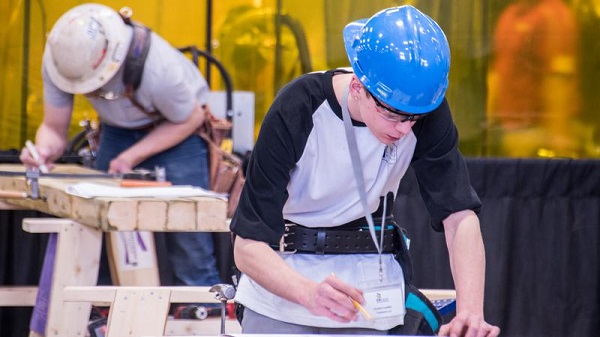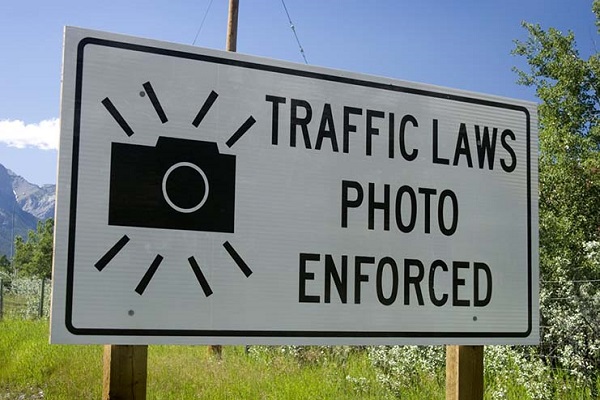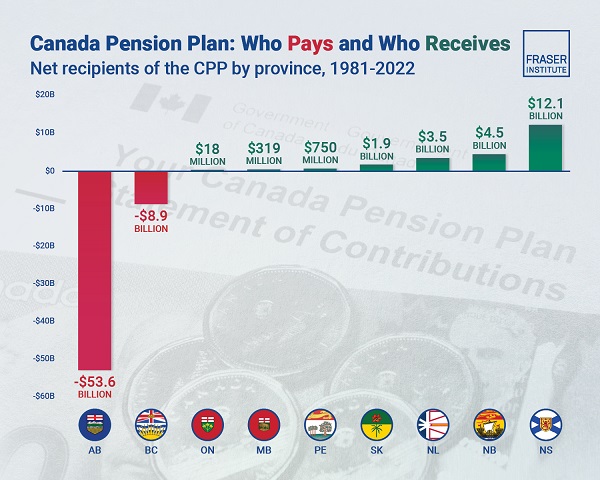Alberta
What Was The Dangerous Purpose?

From the Frontier Centre for Public Policy
By Ray McGinnis
During the trial, RCMP officers described what they found as “pipe bombs” in the Tony Olienick’s Claresholm, AB, property after his arrest. They alleged that these were to be used for a dangerous purpose. During the Coutts Blockade, the “explosive” device remained on Olienick’s property, a two-hour drive away.
On August 2, a Lethbridge jury found Chris Carbert and Tony Olienick not guilty of the most serious charge of conspiracy to commit murder of police officers. However, both were found guilty of possession of weapons for a dangerous purpose.”
After the verdict, Newsweek reported “documents obtained under an Access to Information and Privacy Act request showed that the RCMP had been profiling protesters by running license plates through databases, then focusing in on those who possessed federal gun licenses.”
Possession of a Weapon for a Dangerous Purpose
Olienick’s lawyer, Marilyn Burns told this reporter of the charge, “I have not found a case where the charge of possession of a weapon for a dangerous purpose has not been twinned with an act of murder, violence.” This section of the Canadian Criminal Code, she explained, “has two categories: “dangerous purpose for the public peace” or for “another criminal act.” The charge brought by the Crown against Carbert and Olienick was for “possession of a weapon for a dangerous purpose” being “dangerous for the public peace.”
Tony Olienick didn’t have any weapons while he was standing outside of Smugglers Saloon at the time he was arrested. He had a rifle and a 22, and had moved them from his truck to the trailer. There were several guns in the trailer Chris Carbert was sleeping in at the time of his arrest. However, when he came out of the trailer to be arrested, he was unarmed. During the trial, it was confirmed it’s not illegal to have firearms in your camper trailer. It’s legal to have firearms for self-defence in your camper trailer to defend yourself against a civilian intruder. No guns were seen in public. Carbert, Olienick (and Lysak) snuck the guns into the trailer when no one saw them to make it safe – so nothing would happen accidentally to someone in view.
What was the Dangerous Purpose?
Chris Carbert’s lawyer, Katherin Beyak, summarized, “The evidence wasn’t there for Chris needing to have a firearm for self-defence at the blockade, that evidence just didn’t come forward. That’s why I’m trying to figure out what the dangerous purpose was. Other than, perhaps, the jury didn’t think there was a valid purpose for having a firearm at the protest. I don’t know, and we can’t ask them (the jury).” Asked about the jury decision, Beyak said the jury decision may have been “more of a statement that this was supposed to be peaceful, and you shouldn’t have had firearms there.”
The message from this verdict to Canadians may mean even if you are unarmed, you shouldn’t have firearms in the vicinity of a municipality where there is a protest.
Explosive Witness Testimony
The jury also found Tony Olienick guilty of possession of explosives for a dangerous purpose.
Brian Lambert, a sandstone quarry owner and colleague of Olienick, testified at the trial. He described an explosive device, nicknamed “firecrackers” in the business, he observed Olienick use years ago. Lambert testified Tony Olienick use these “firecrackers” to dislodge stone that would get sold and repurposed for construction. Olienick’s father served as a peacekeeper in the Canadian Armed Forces in Cypress. A stone quarry in southern Alberta occasionally got drill bits stuck in the stone. Olienick’s father created an explosive device with plumbing pipe, ordinary gunpowder, and a fuse that can be purchased at a hobby store. It was used to dislodge drill bits from a stone. After he died, the “firecracker” device was gathered up by Tony Olienick along with other items from his father’s estate. The son moved it onto his property. While the late Mr. Olienick had a permit to use the device, his son didn’t renew the permit for the explosive device.
Marilyn Burns, lawyer for Tony Olienick, relates the RCMP went through everything to find that device in a pile of other belongings of her client’s late father. During the trial, RCMP officers described what they found as “pipe bombs” in the Tony Olienick’s Claresholm, AB, property after his arrest. They alleged that these were to be used for a dangerous purpose. During the Coutts Blockade, the “explosive” device remained on Olienick’s property, a two-hour drive away.
A Warning
One takeaway from the jury verdict: if you go to a protest, make sure any explosive device you have at your property has a permit. Otherwise, even if the device in question is a two-hour drive away, you could be found guilty of possession of explosives for a dangerous purpose.
This commentary is second of a three part series. Read part one here, and three here.
Ray McGinnis is a Senior Fellow with the Frontier Centre for Public Policy. His forthcoming book is Unjustified: The Emergencies Act and the Inquiry that Got It Wrong
Alberta
Province pumping $100 million into Collegiates and Dual-Credit hands-on learning programs

Alberta’s government is helping students discover their skills and interests today, to help them find careers for tomorrow.
If passed, Budget 2025 will provide more than $100 million over three years for school boards to grow career education programs, including funding for more collegiate and dual-credit programs across Alberta.
“We are working to set students up for success by strengthening job-focused education. This money is helping schools partner with businesses, universities and colleges to create programs that will help students hit the ground running after they graduate.”
Career education helps students gain credits towards graduation while earning hands-on experience in fields like the trades, computer programming, health care, agriculture, culinary arts and more. These career education programs support a strong economy by helping students learn the skills they need to get in-demand jobs.
Collegiate schools
Collegiate schools work with businesses, universities and colleges to offer classes that give students pathways to education and careers in the job of their choice. There are 12 collegiate schools in Alberta, offering many different types of programming for grades 7-12, including aviation, graphic design, trades and more.
If passed, Budget 2025 provides more than $21 million to school boards to help fund special classrooms like carpentry workshops, film and media rooms, science laboratories, heavy equipment simulators and aircraft hangars. Another $6 million is being invested to support the start-up costs for new collegiate schools.
Dual-credit programs
Budget 2025, if passed, also provides $4.6 million in 2025/26 to start new or improve existing dual-credit programs. In partnership with universities and colleges, dual-credit programs give students a head start on rewarding careers by allowing them to earn high-school and post-secondary credits at the same time. Of the $4.6 million, $550,000 is being provided by Alberta Seniors, Community and Social Services for new and improved dual-credit health care aide programs.
“Health care aides play a critical role in ensuring Albertans receive the continuing care services they need to maintain their health, independence and quality of life. Our investments into career pathways for health care aides will provide opportunities for young Albertans to develop the skills they need to build a rewarding career in Alberta’s continuing care workforce.”
Another $1.4 million is being invested to support students participating in off-campus career education programs through CAREERS. This non-profit connects students to jobs in high-demand fields, such as the trades, technology, health, forestry and agriculture.
“Investments in collegiate and dual-credit programming are significant for Calgary Catholic as they further strengthen our collegiate and dual-credit programming. This programming will open opportunities for our students and help them to realize their full potential.”
“Before Fusion Collegiate, I felt lost and wasn’t really sure what to do after high school. Thanks to its career-focused learning and the opportunities through Fusion and The Educational Partnership Foundation, I’m now working as a first-year apprentice plumber with Mr. Rooter. The hands-on trades training, high school credits, safety certifications, and real-world skills I picked up completely changed my life. I’m excited about where my career is headed and really thankful for the support that helped me get here.”
Budget 2025 is meeting the challenge faced by Alberta communities with continued investments in education and health, lower taxes for families and a focus on the economy.
Quick facts
- If passed, Budget 2025 invests $102.4 million over three years to provide sustainable, predictable career education funding, and to increase access to career education for Alberta students.
- This includes $8.4 million over 2026-27 and 2027-28 to raise awareness among students and families of career education programs and pathways available to Alberta students.
- Career education in Alberta includes career and technology courses, Career and Life Management (CALM), dual-credit courses, collegiate schools, apprenticeships and off-campus education programming.
- Since 2013, more than 95,000 high school students participated in at least one dual–credit course.
- In spring 2025, Alberta Education will engage with education partners on best practices to bring more career education opportunities to students.
- Since 2022, education partners and almost 5,000 Albertans have provided their feedback on career education and workforce needs.
Related information
Alberta
Photo radar to be restricted to School, Playground, and Construction Zones as Alberta ends photo radar era

Alberta’s government is fulfilling its promise to end Automated Traffic Enforcement (ATE) in select locations while enhancing safety with a new Traffic Safety Fund.
For years, Alberta has had the most ATE sites of any jurisdiction in Canada with many serving as a “cash cow,” generating millions of dollars in revenue with no clear evidence they were improving traffic safety. Now, following thorough consultation and review of existing ATE sites, Alberta’s government is making significant changes to restore public trust in the use of photo radar.
Effective April 1, the updated ATE Technology Guideline will prohibit photo radar on numbered provincial highways and connectors, restricting it only to school, playground and construction zones. Intersection safety devices in Alberta will also be limited to red light enforcement only, ending the “speed-on-green” ticketing function.
“We have officially killed the photo radar cash cow and the revenue-generating “fishing holes” that made Alberta the biggest user of photo radar in Canada. The updated guideline will ensure that photo radar is used for safety only. The new provincial traffic safety fund will support municipalities in physical improvements at key intersections, helping to reduce traffic risks and enhance safe roads.”
Alberta’s government has also created a new $13-million Traffic Safety Fund for municipalities to upgrade local roads and intersections that pose demonstrated safety risks. Details will be made available on how to apply for the Traffic Safety Fund, once the application process has been finalized.
“This shift ensures that photo radar is used where it matters most – near schools, playgrounds and construction zones. Traffic enforcement should be about protecting people, not generating revenue. The new Traffic Safety Fund gives municipalities the tools to make targeted improvements to roads and intersections with real safety concerns. Keeping Edmontonians safe on our streets must always remain the priority.”
“Shifting photo radar to playgrounds and construction zones enhances safety where it matters most – protecting our children and workers on Calgary’s roads. I’m proud to back this important step toward safer communities.”
“The Traffic Safety Fund is a welcome addition to the overall funding available to municipalities. The Rural Municipalities of Alberta support a dynamic approach to managing traffic safety.”
Municipalities are encouraged to use traffic calming measures instead of photo radar but may request provincial approval for an exemption to the photo radar ban in high-collision locations. To do so, municipalities must submit a business case detailing high-collision frequency and severity at the site, relative to similar locations, and demonstrate how other safety measures are not possible or will be ineffective. To be approved for an exemption, they must also commit to audit the exempted site every two years to assess the effectiveness of photo radar in reducing collisions at that location.
The updated ATE Technology Guideline also includes parameters around equipment testing and maintenance, data collection and reporting requirements, traffic safety plans, signage and public communication of photo radar locations.
Quick facts
- On April 1, the new ATE 2025 Technology Guideline comes into force.
- The newly created Traffic Safety Fund will provide $13 million over three years to help municipalities re-engineer intersections to reduce collisions:
- $1 million in 2025-26
- $2 million in 2026-27
- $10 million in 2027-28
- Alberta first introduced photo radar in 1987.
Related information
-

 2025 Federal Election2 days ago
2025 Federal Election2 days agoPoilievre refuses to bash Trump via trick question, says it’s possible to work with him and be ‘firm’
-

 COVID-192 days ago
COVID-192 days ago17-year-old died after taking COVID shot, but Ontario judge denies his family’s liability claim
-

 Community2 days ago
Community2 days agoSupport local healthcare while winning amazing prizes!
-

 Alberta1 day ago
Alberta1 day agoAlberta Institute urging Premier Smith to follow Saskatchewan and drop Industrial Carbon Tax
-

 Business2 days ago
Business2 days agoWhile “Team Canada” attacks Trump for election points, Premier Danielle Smith advocates for future trade relations
-

 2025 Federal Election1 day ago
2025 Federal Election1 day agoFool Me Once: The Cost of Carney–Trudeau Tax Games
-

 Addictions1 day ago
Addictions1 day agoShould fentanyl dealers face manslaughter charges for fatal overdoses?
-

 Alberta23 hours ago
Alberta23 hours agoAlbertans have contributed $53.6 billion to the retirement of Canadians in other provinces





